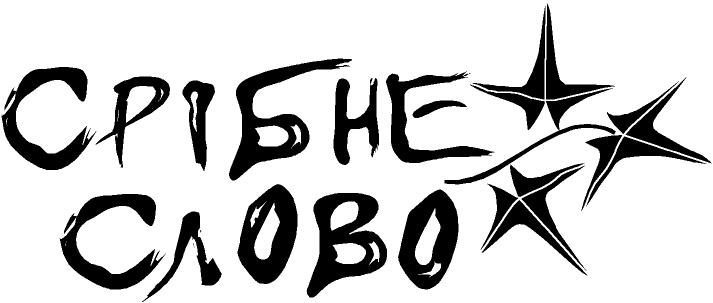- Рубрики
- Філософія, психологія, педагогіка
- Історія
- Політика, право
- Економіка
- Математика
- Фізика
- Хімія, хімічна технологія
- Біологія, валеологія
- Геодезія, картографія
- Загальнотехнічні науки
- ІТ, комп'ютери
- Автоматика, радіоелектроніка, телекомунікації
- Електроенергетика, електромеханіка
- Приладо-, машинобудування, транспорт
- Будівництво
- Архітектура, містобудування
- Мовознавство
- Художня література
- Мистецтвознавство
- Видавнича справа, поліграфія, дизайн
- Словники, енциклопедії, довідники
- Журнал "Львівська політехніка"
- Збірники тестових завдань
- Книжкові видання
- Наукова періодика
- Фірмова продукція
Маргіта Н. О., Криницька М. Ю. Інноваційні інструменти ідентифікації потужності логістичної системи виробничого підприємства
УДК: 338.32.053.3-4
JEL: D24, L23, L69
Н. О. Маргіта, М. Ю. Криницька
Національний університет “Львівська політехніка”
ІННОВАЦІЙНІ ІНСТРУМЕНТИ ІДЕНТИФІКАЦІЇ
ПОТУЖНОСТІ ЛОГІСТИЧНОЇ СИСТЕМИ
ВИРОБНИЧОГО ПІДПРИЄМСТВА
© Маргіта Н. О., Криницька М. Ю., 2017
Проаналізовано інноваційні інструменти ідентифікації потужності логістичної системи, що пропонуються ТОС. Теорія обмежень – це методика управління підприєм¬ством, спрямована на досягнення довготермінових корисностей через відповідне управління існуючими на підприємстві обмеженнями, тобто “вузькими місцями”, які присутні в системах управління, виробничих процесах чи процесах дистрибуції.
Ключовим припущенням теорії обмежень є те, що кожна, навіть найскладніша система або процес має одне обмеження, яке визначає ефективність всієї системи або процесу. Ця концепція концентрується на виявленні наявних проблем у системі і знаходженні методів їх вирішення, спрямованих на нівелювання або повне усунення цього обмеження. Варто мати на увазі, що зміна одного параметра системи спричиняє відповідну зміну інших, тому важливо пам’ятати, що управління обмеженнями – це безперервний процес, який потребує комплексного підходу.
Охарактеризовано різні групи обмежень, такі як управлінські чи фізичні обмеження. Досліджено негативні ефекти існування обмежень у логістичній системі. Розглянуто практичні аспекти застосування інструментів ТОС на прикладі виробни¬чого підприємства на основі методу п’яти сфокусованих кроків ТОС. Узагальнено методичні підходи до визначення вузького місця та розроблено алгоритм пошуку вузького місця. Проаналізовано потужності ланок логістичної системи виробничого підприємства, визначено вузьке місце виробничої системи.
Ключові слова: теорія обмежень, вузьке місце, потужність ланок логістичної системи, практичні аспекти застосування ТОС.
THE INNOVATIVE TOOLS OF INDUSTRIAL
ENTERPRISE LOGISTICS SYSTEM POWER IDENTIFICATION
© Marhita N., Krynicka M., 2017
The innovation tools of logistics system power identification offered by TOC are analyzed. Theory of Constraints – a management method, aims to achieve long-term utilities through appropriate management of company’s existing restrictions that is “bottlenecks” that attend in management systems, production processes or distribution processes.
A key assumption of the Theory of Constraints is that everyone, even the most complicated system or process has one limitation that determines the effectiveness of the system or process. This concept focuses on identifying existing problems in the system and finding ways to solve existing problems aimed at minimization or complete removal of the restriction. It should be borne in mind that one system parameter changing causes a corresponding change in the other, so it is important to remember that management of restrictions - is a continuous process that requires an integrated approach.
Different groups of restrictions, such as administrative or physical limitations are characterized. As under restrictions we understand all that prevents the company to work effectively, it elimination opens company’s hidden reserves. To reap the benefits important to manage the existing constraints. Restriction management means ensuring maximum use of its capacities and opportunities, which requires “subordinate” the whole system of existing restrictions. Negative effects of logistics system restrictions are stydied. The practical aspects of TOC tools for industrial enterprises are analyzed based on TOC five focusing steps, which includes the following: identify the limits of the system; decide how to use the system constraints; bring all other elements of the system in line with previous steps; eliminate the limitation of the system; after the previous step restriction was lifted, go back to step 1, but do not let inertia become the cause of restriction. Make sure that the restriction defined correctly and identify any new restriction that could arise during the work.
Methodological approaches to determining the bottleneck are generalized, search algorithm of bottleneck is elaborated which consists of the following stages: determining the scale of analysis (supply chain, production system, subsystem, etc.); determine the components of the system; combining components of the system in a logical sequence; determine the maximum capacity of system elements; determine the amount of their actual use; compare the maximum capacity and their actual use, calculating the difference (unused reserves); determining element with the lowest output, which limits the system – bottleneck. Power of industrial enterprise logistic system units are analyzed, production system bottleneck is defined.
Key words: Theory of Constraints, bottlenecks, logistics system units power, TOC practical aspects.
Література – 9



















